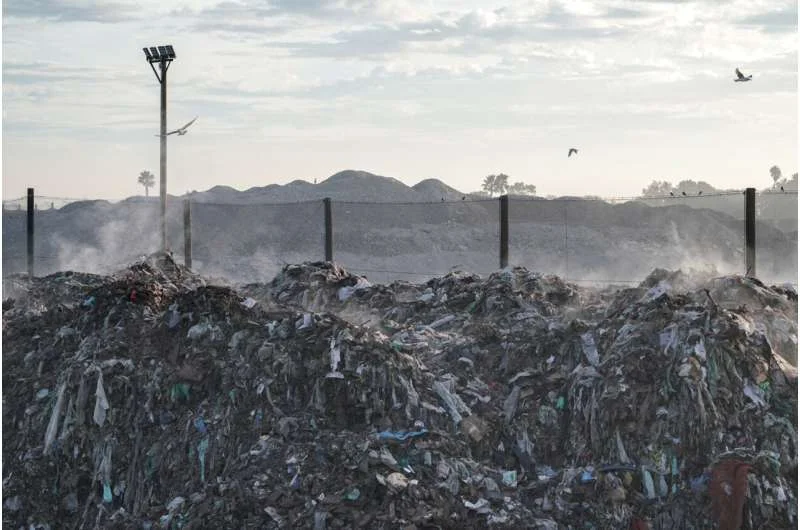Methane is the second most abundant greenhouse gas in Earth’s atmosphere, and its emissions have been increasing rapidly and mysteriously since 2007. Despite its widespread distribution, the colorless compound’s origins are difficult to trace, complicating efforts to block gases that trap heat in the atmosphere and warm the planet.
To overcome this problem, a team of researchers led by the University of Maryland developed a new method to “eliminate fingerprints” of methane. In a study published in the journal Proceedings of the National Academy of SciencesThe chemical composition of the rarest forms of methane, known as isotopic variants, is analyzed. This new approach will help researchers separate fossil fuel methane sources from microbial sources originating from swamps, landfills, and farms; This is a difficult feat to achieve with existing methods that measure the more common isotopes of methane.
“Methane plays an important role in climate change, but there are many unknowns about the reasons for the recent increase in methane in the atmosphere,” said lead study author Moihgan Hagnegadar, a National Science Foundation postdoctoral fellow in the UMD Department of Geology.
“Our understanding of how to control and reduce methane emissions into the atmosphere will be critical to maintaining our standard of living and avoiding major costs to society in the not-too-distant future.”
The research team analyzed air samples collected from various locations on or near the UMD campus. Using custom-made extraction equipment, the researchers also captured methane gas from a closed grill burning wood and coal, two wetlands, and samples of compressed air and natural gas. After isolating and purifying the methane, they used a high-resolution mass spectrometer to examine the chemical composition of the gas more closely.
Their analysis showed that microbial methane sources differ from fossil fuel sources. The isotopic signature of a particular methane plume can be used to identify the culprit, helping policymakers trace this greenhouse gas to its source and prioritize mitigation efforts.
“Understanding what drives atmospheric methane fluctuations has important implications for how society approaches reducing this greenhouse gas,” Hagnegadar said. “Do we focus mitigation efforts on fossil sources, such as natural gas leaks, or microbial sources, such as landfills, agriculture, and wetlands?”
Russell Dickerson, professor of atmospheric and oceanic sciences at UMD and co-author of the study, explained why it is so difficult to trace methane to its source.
“There are many sources of methane, both natural and man-made, so if there is a landfill and swamp near a natural gas distribution center or a city with a leaky old supply infrastructure, it is difficult to tell which source is dominant,” Dickerson said. ” he explained. “Isotopes can tell us where the methane comes from.”
In addition to monitoring current emissions, the researchers believe their method can be applied retrospectively, allowing them to study long-term changes in the global methane cycle. As a next step, the team is trying to take decades-old air samples to determine whether past models of methane emissions are accurate. In the future, these methods could also be used to determine whether any efforts to reduce or remove methane from the atmosphere have been successful.
Methane is 28 times more powerful than carbon dioxide at trapping heat in the atmosphere. However, methane has a shorter lifespan (about 10 years) than the hundreds of years that carbon dioxide can remain in the atmosphere. This makes it an important target for climate action, according to study co-author James Farquhar.
“Reducing methane emissions is one of the few things we can do that will have an impact throughout our lifetime,” said Farquhar, the university’s distinguished professor and chair of UMD’s geology department. “If we can buy just 50 years for others to figure out how to deal with climate change, we will be living in a very different world.”













